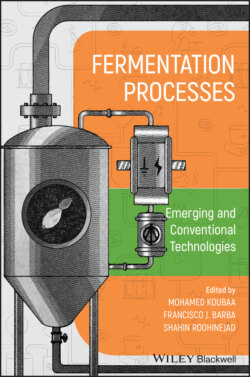Читать книгу Fermentation Processes: Emerging and Conventional Technologies - Группа авторов - Страница 11
1.1.2 Production of Microbial Metabolites
ОглавлениеMicroorganisms are characterized by a variety of metabolic pathways that allow them to synthesize a host of organic compounds, called metabolites, many of which are potentially useful. In this type of fermentation, it is sought to produce by the metabolic activity of a microorganism a substance that is too complex to be chemically synthesized at a reasonable cost (Jeandet et al. 2013).
Metabolites are generally divided into two categories depending on whether they are produced in relation to growth or not. The first ones are called primary metabolites and are produced in large enough quantities during the exponential growth phase by essential metabolic pathways that are common to many microorganisms. Several primary metabolites produced by fermentation are the residues of the energetic catabolism of microorganisms. These are mainly alcohols, solvents, and organic acids used in food or the chemical industry. Others are derived from cellular anabolism. These are mostly amino acids and vitamins produced for food or pharmaceutical purposes (Sanchez and Demain 2009).
The second ones are called secondary metabolites and are usually produced in small quantities during the stationary phase, and sometimes even during the decline phase, by particular metabolic pathways that are exclusive to a few species and usually give them a survival advantage in the wild. Secondary metabolites form an extremely heterogeneous group of compounds, derived from anabolism, whose main uses are in pharmaceuticals (e.g. antibiotics, growth factors, enzyme inhibitors, etc.). Although not essential for microbial growth, secondary metabolites are very important for health, nutrition, and the economics of our societies (Bérdy 2005).
